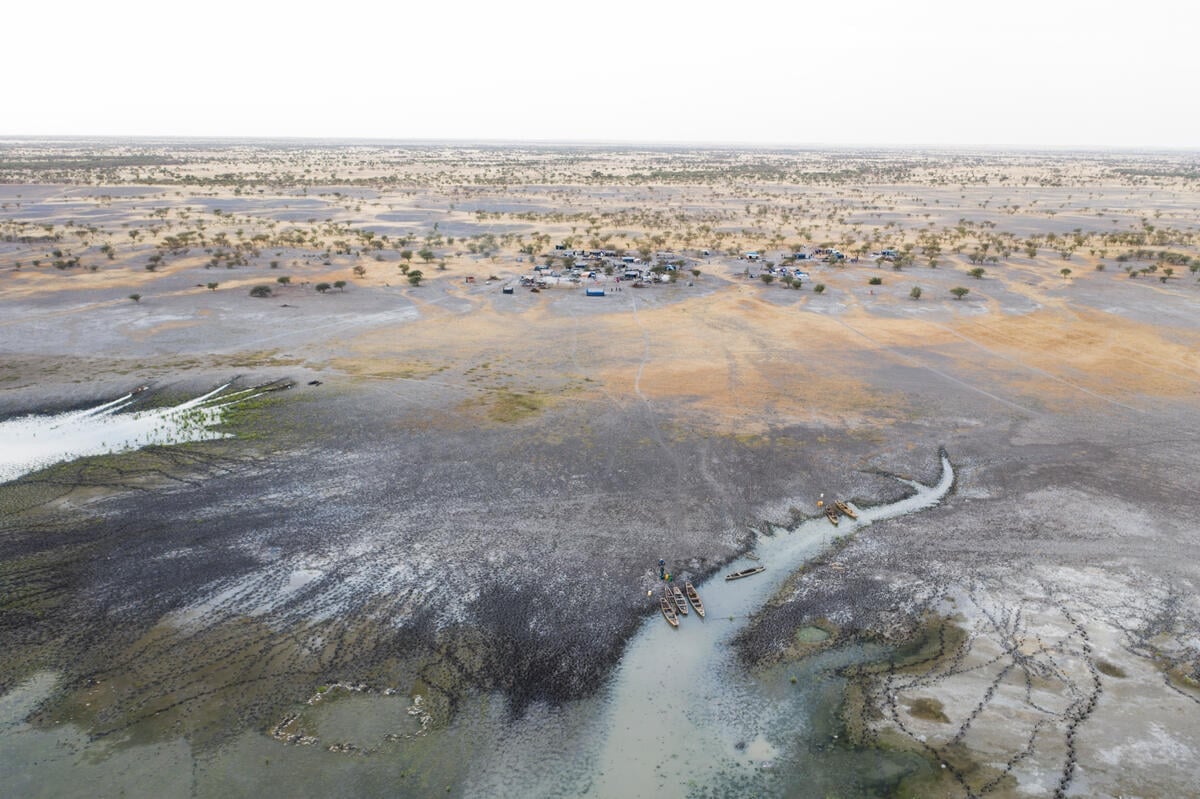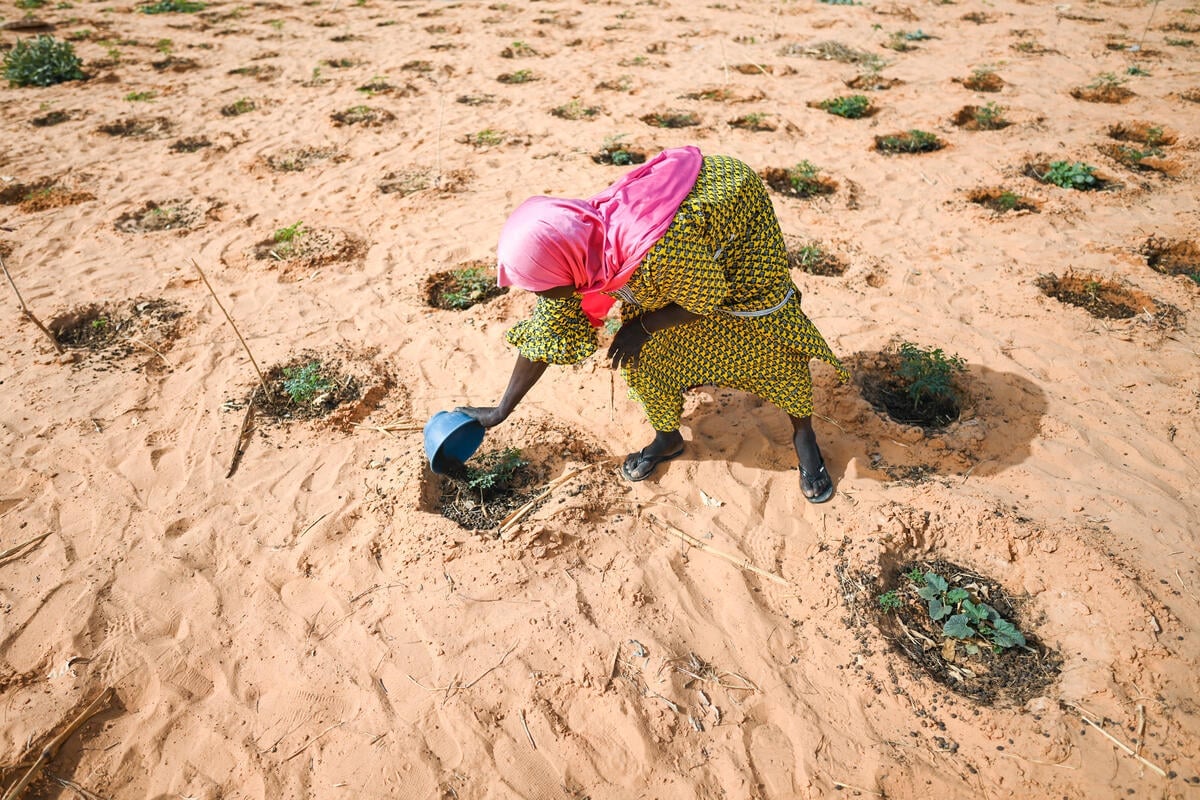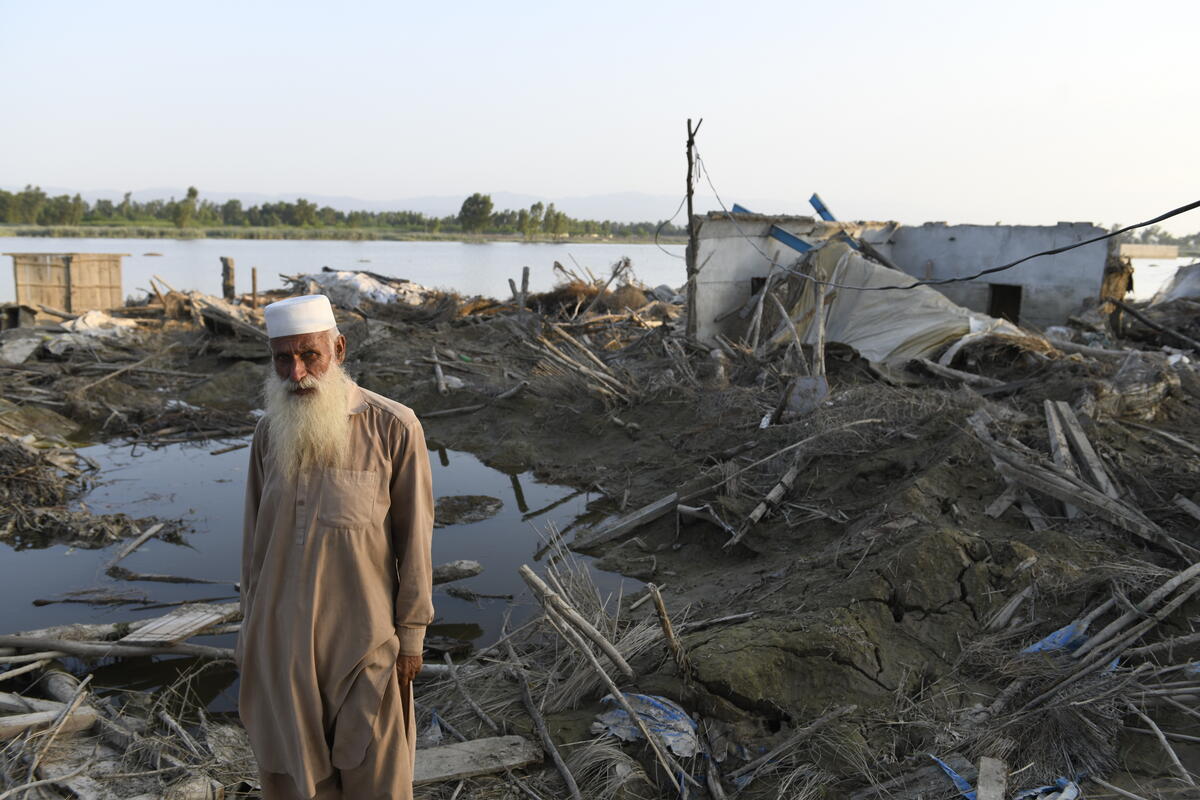Iraq hit by heatwaves, making life for refugees even tougher
Iraq hit by heatwaves, making life for refugees even tougher

KAWERGOSK, Iraq, July 31 (UNHCR) - Sozan and her family have lived in a plastic tent for the past two years. In the winter, the tent's roof and walls protect her and her four children from the elements, but come summer it turns into an oven.
Now with Iraq in the midst of the summer's second heatwave, temperatures are regularly topping 50 degrees Celsius, compounding the already difficult lives of hundreds of thousands of refugees like Sozan.
"You can feel it's like hell, there's no way to describe it," Sozan says. Originally from Qamishli, Syria, she and her family are now sheltering in Kawergosk refugee camp in the Kurdistan Region of Iraq.
This is their second summer living in Iraq as refugees. While Sozan says she is more accustomed to the heat this year than last, this summer's punishingly high temperatures have been particularly difficult to cope with.
By 9.00 a.m. local time, Sozan and her children are already sweating through their clothing. One by one she takes them into the kitchen area of their tent and gives them bucket showers to help cool them off.
"This is the only thing that works," she says. "I call it a shower, but they keep [some of] their clothing on, that way it cools them more when it dries."
The camp she lives in is almost completely lacking in natural shade.
Under the dry heat, dust kicked up from dirt roads fills the air and the smell of sewage becomes more intense. At midday, streets that are normally bustling, empty out.
The Kurdistan Region of Iraq is hosting over a million internally displaced people in addition to almost 240,000 Syrian refugees as of June.
Those hardest hit by the summer heat are the young and elderly living in camps and makeshift housing. Additionally, Iraq is experiencing it's second heatwave this summer with temperatures topping 50 degrees Celsius in places where the average is normally 45.
The weather is so extreme, the Iraqi government has declared a four-day national holiday, allowing government employees to stay home, but for the hundreds of thousands of Syrian refugees and displaced Iraqis living in tents around the country, the gesture offers little relief.
For Sozan and her family, the summer weather also brings health problems. Sozan has already had to bring her youngest child, Shakira, seven months old, to the camp clinic twice in the past week.
"She was suffering from a fever and diarrhea," Sozan says the same happened to her other children last year. "This never happened in Syria when we lived in a normal house."
Like many refugee camps in Iraq's Kurdistan Region, most of Kawergosk camp lacks underground plumbing. While shared toilets empty into septic tanks, waste water from individual tents flows out into the street. Outside Sozan's tent pools of waste water that were quickly washed away by rain in the winter, fester in the midday summer sun.
"I've stopped letting the children play outside," Sozan says explaining that she suspects the dirty water is what was making them sick last summer.
Doctors at the camp clinic say they see an increase in the number of heat related illnesses every summer especially among children and the elderly.
"I would say 80 percent of my patients now have illnesses triggered by the summer heat," says Doctor Ahmed Hassu, working with International Medical Corps (IMC), a UNHCR implementing partner.
He says most people he sees have diarrhea and vomiting. The stomach infections he says are most often caused by poor drainage and spoiled food. While many families have refrigerators, electricity is intermittent and in the summer heat it becomes more difficult to keep food from going off.
At the moment Hassu says the heath issues are manageable, but worries they could quickly escalate if refugee camps don't take steps to improve summer living conditions.
As part of a region-wide summer assistance initiative, UNHCR distributed solar powered fans, plastic sheeting and woven plastic mats to refugees and displaced persons across the Kurdistan Region of Iraq. However, families who received the items explained they did little good as the fans merely move hot air around and the plastic sheeting isn't thick enough to provide protection from the sun. UNHCR partners delivered hundreds of air coolers to refugees and displaced families while UNHCR worked with local partners to increase water shipments to camps.
"This is a critical moment," explained Frederic Cussigh, the head of UNHCR's Erbil field office. "We are at the top of heat right no, but the problem is this heat will continue for another few weeks."
Cussigh acknowledged that UNHCR's response to high temperatures must be realistic and balanced as not to put too much strain on the electricity and water supply of host communities, but overall he says the refugees and IDPs he works with have shown great strength despite trying conditions. "The resilience they've shown, to adapt to very different living conditions then what they are used to has been enormous."
At Kawergosk camp the electricity comes back on around midday and the aircooler in Sozan's tent switches on immediately. Her younger children fall asleep on the thin mattresses that line the room, but her oldest daughter Hiyat, 8, quickly becomes restless, begging to go outside and play.
"No, don't you see the weather? It's too hot," Sozan said explaining that keeping her children indoors all day is almost impossible, "it's more than difficult, of course they want to go and play, but it's not safe."
By Susannah George, Iraq









